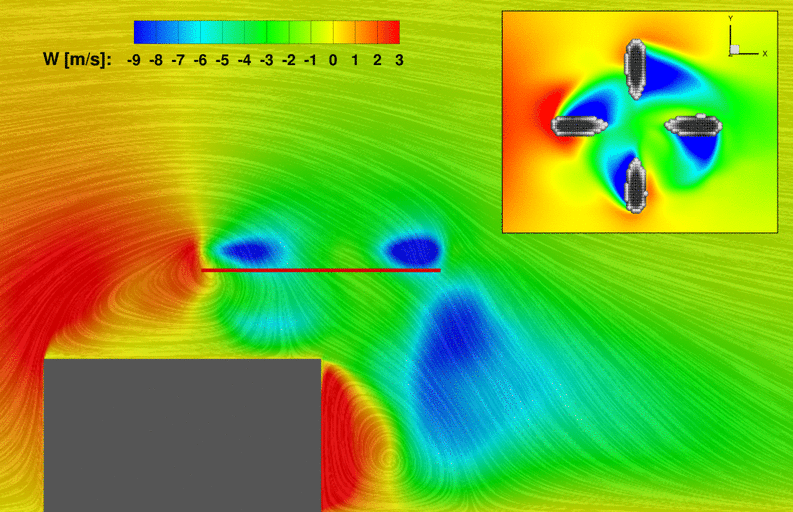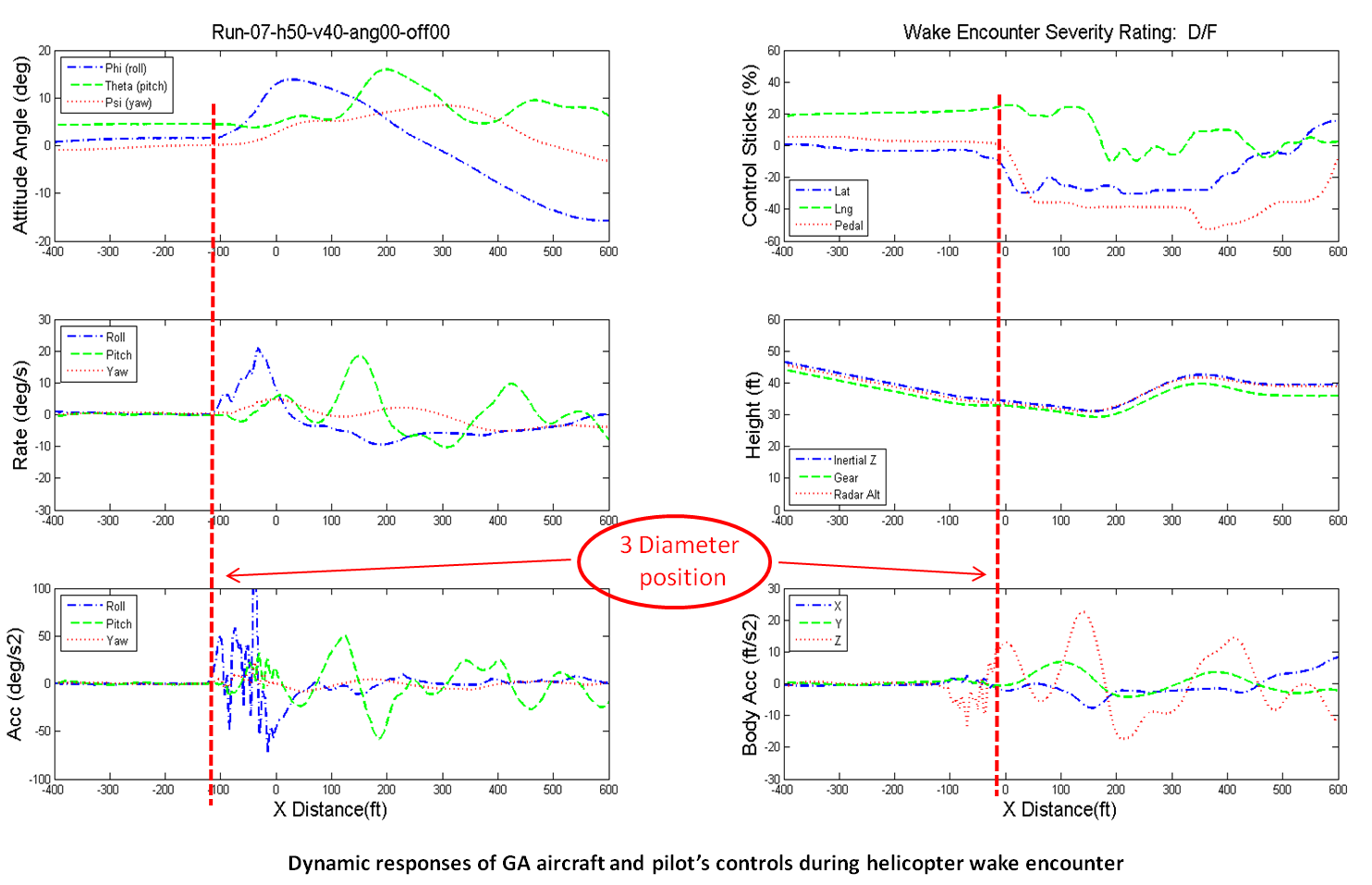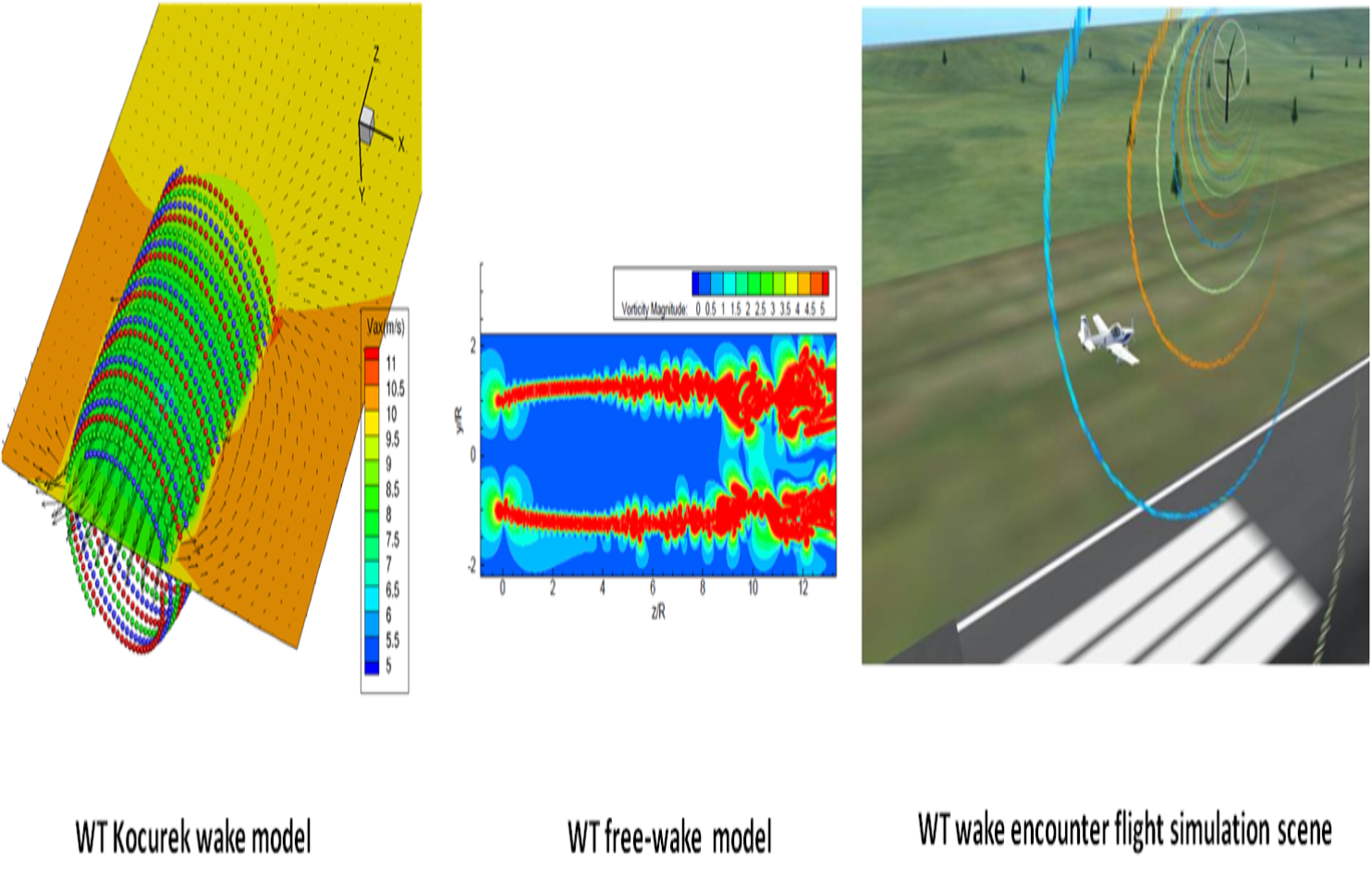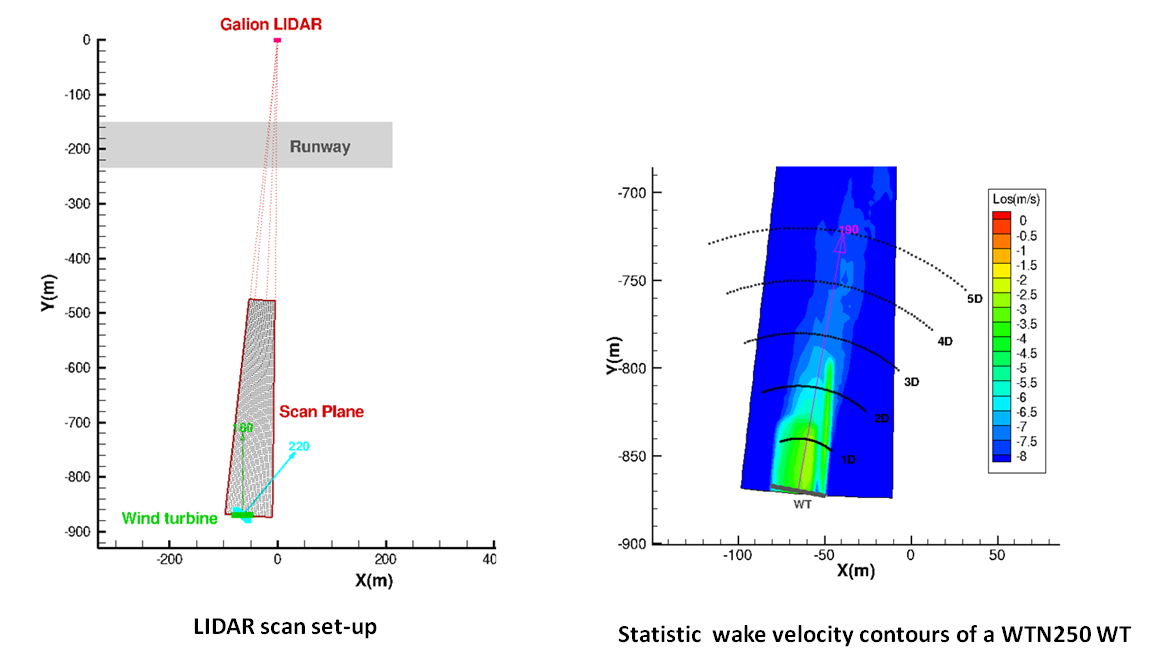Wake Encounter with Aircraft
The wakes generated by helicopters or wind turbines could interfere with passing-by aircraft. A number of serious and fatal accidents have so far been reported when light aircraft entered into a helicopter wake resulting in loss of control. These accidents often happen near airports where helicopters are in hover-taxi, and the encountering aircraft is landing or taking off. This means that both the helicopter and the fixed-wing aircraft are at low altitude, and at relatively low speed. This type of wake encounter scenario has its own specific features, and the wake vortices have their characteristic structure, duration and decay.
Similarly, with increasing sizes of the wind turbine rotors, the strength and influencing region of their wakes increase, and this might potentially generate risks to nearby flying aircraft.
The above, motivated the current work where a wake encounter study using engineering wake modeling, CFD, LIDAR field measurement and piloted flight simulation was carried out.
Publications
Chirico, G., Vigevano, L. and Barakos, G. N. (2015) “Numerical Modelling of the Aerodynamic Interference between Helicopter and Ground Obstacles”. 41th European Rotorcraft Forum. Munich, 1-4 September.
Chirico, G., Vigevano, L. and Barakos, G. N. (2015) “Numerical Modeling of the Aerodynamic Interference between Helicopter and Ground Obstacles”. First UK Technical Workshop - "Taking a Snapshot of the Academic Research in Vertical Lift". Oakmere, 10-12 April.
Wang, Y., White, M., Barakos, G. N., Tormey, P., and Pantazopoulou, P. (2015) “Simulation of a light aircraft encountering a helicopter wake”. Journal of Aircraft, 52(2), pp. 510–523. (doi:10.2514/1.C032761)
Wang, Y., White, M., Barakos, G. N., Wheeler, S., Tormey, P., and Pantazopoulou, P. (2014) “Wind Turbine Wake Encounter by Aircraft”, 40th European Rotorcraft Forum, Southampton, UK.
Wang, Y., White, M., and Barakos, G.N. (2016) Wind turbine wake encounter by light aircraft. Journal of Aircraft, (Accepted for Publication)
Wang, Y., White, M., Barakos, G. N. (2015) “Helicopter Wake Encounter Study”, Tech. report, University of Liverpool.
Wang, Y., White, M., Barakos, G. N. (2015) “Wind Turbine Wake Encounter Study”, Tech. report, University of Liverpool, 2015.
Contact
G. Barakos - Professor, George.Barakos@glasgow.ac.uk
CFD Laboratory, School of Engineering
James Watt South Building, University of Glasgow
Glasgow G12 8QQ, United Kingdom



Methodologies
Predictions of Helicopter and Wind Turbine Wakes
Different helicopter wake models are presented and compared with available wind tunnel and flight test data. A free wake model was then used to generate the wake vortices of a helicopter hover-taxing over an airport runway. A hybrid wake model, with a wake decay law, was also used to generate the far wake of a helicopter in level flight. A modified Kocurek wind turbine wake model, a helical wake model, free wakes, and full CFD were used for wind turbine wake predictions and were validated with wind tunnel data and field measurements.
Field Measurements of Wind Turbine and Helicopter Wakes
LIDAR field measurements of the wake flow of a WTN250 wind turbine (installed near the East Midlands Airport, UK) were coordinated by CAA and supported by SgurrEnergy. Wake measurements of helicopters in hover and hover-taxiing, were also carried out by JAXA, and the data is exploited with the University of Liverpool.
Piloted Flight Simulations of Wake Encounters
The wake induced velocity fields were integrated into an aircraft flight dynamics model, and piloted flight simulations were carried out to study light aircraft encounters with helicopter wakes during landing and level flight. WTN250 wind turbine wake encounters were also studied using piloted flight simulations. The severity of these wake encounters were investigated using the pilot's wake vortex severity rating scale. The dynamic responses and pilot's control activities were also used to quantify the wake encounters.
Off-line Flight Simulations Analysis of Wind Turbine Wake Encounters
Off-line flight simulation analyses were applied to wind turbines to determine aerodynamic loads and excursions of attitudes of the aircraft during wake encounters. The wake induced crosswinds on the aircraft were also analysed.
Results
For the landing scenario, the existing wake encounter criteria and severity metrics for the determination of hazardous distances might not be appropriate if the wake encounter occurs close to the ground. The landing simulation results suggest that for a helicopter in low-speed hover-taxiing (less than 40 kt airspeed), the wake encounter detectable horizontal distance is about three times the diameter of the rotor, which coincides with the current safety guidelines of the Civil Aviation Authority of the UK. The level flight simulations revealed the effects of the vertical separation distance and of the wake decay on the encounter severity.
LIDAR data statistically indicate that the effects of the WTN250 and smaller wind turbine wake, in terms of velocity deficit, are limited within a downwind distance of 5D. This is, broadly, in agreement with the results of full CFD analyses and velocity deficit models. The piloted flight simulation results suggest that, for the employed small wind turbine, the wake generated minor upsets on the aircraft if only the disturbances caused by wake velocity deficits were taken into account.







